Published Jan 2, 2016
Seeing Double -- Two Habitable Worlds in One Solar System
Seeing Double -- Two Habitable Worlds in One Solar System
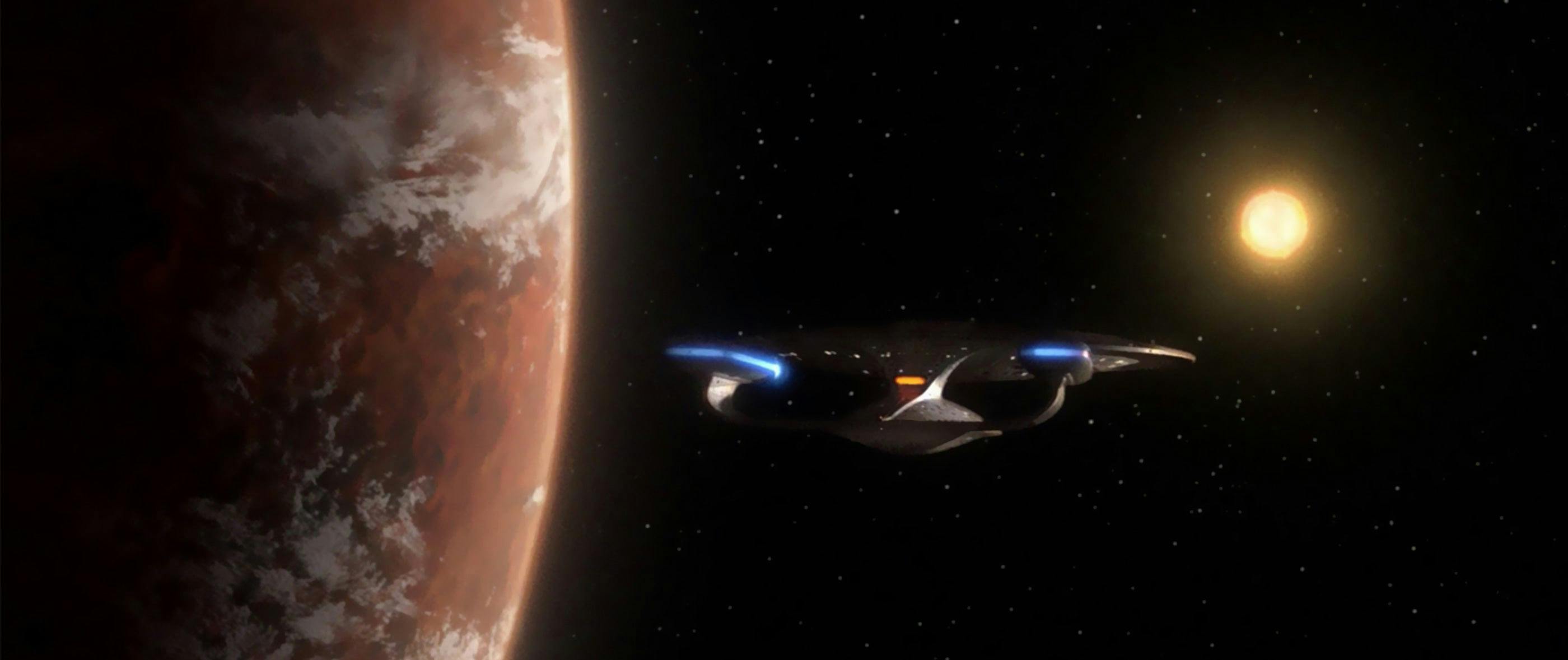
NASA’s Kepler spacecraft has found lots of new planetary systems over the last few years. Many of these systems have more than one planet, much like our solar system. The ultimate goal, of course, is to find Earth-like planets, which means planets roughly of Earth’s size and mass, at a distance from its primary star such that water is liquid on the surface a good part of the year. Kepler has found systems with a planet in this habitable zone, and sometimes more than one. Taking the example of the Kepler-62 system, we have planets e and f in the habitable zone.
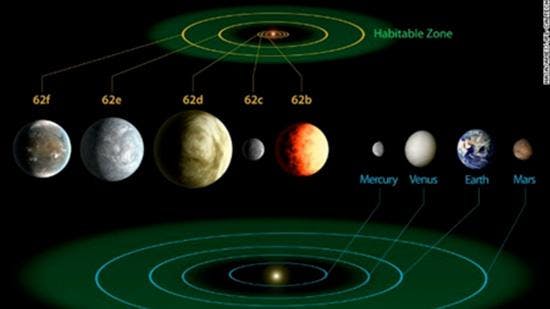
Figure 1: The Kepler-62 system. Credit: NASA Ames/JPL-Caltech.Comparing this with our solar system, Earth is right in the sweet spot, Venus is just on the inner edge of the habitable zone, while Mars is on the outer edge. Venus has given us an example of a runaway greenhouse effect; it is too hot on the surface to support our kind of life. Mars has much less mass and size, its core cooled off much faster than Earth’s (and probably Venus’), which may have led to the demise of the Martian magnetic field and caused global climate change, leaving Mars with a much colder world with a very thin atmosphere.Kepler 62e and 62f are similar in size and both a bit larger than Earth, so they should keep their hot cores for a while. Both of these planets could be candidates for the development of life. A recent study from the University of Nevada Las Vegas noted that Kepler has found such planet pairs in close proximity, with some orbital distances differing by about 10 percent. If we scaled this situation to our solar system, then the distance between the two planets at closest approach would be only about a tenth of an astronomical unit, which is about 40 times the distance from Earth to the Moon. An astronomical unit is the distance from Earth to the Sun. If we look at the Earth and Mars pair, they are about 200 times the lunar distance at closest approach. If we have two planets in a habitable zone, it is quite possible for them to exchange material via meteor impacts. We have discovered many meteorites originating from Mars here on Earth. It is reasonable to assume that Mars also got meteorites from Earth (the rovers haven’t found any of those yet, though). Since traveling between neighboring planets results in lesser travel time and lower impacts for the meteorites, the study concluded that microorganisms have a much higher chance of survival in this situation. This means that if life evolves on one planet, it might well end up on the other one as well. It would also imply that that the life forms on both planets share a similar origin, way down in the roots of the family tree. If civilizations arose on both planets, they would become aware of each other relatively soon, possibly initiating communications before actually meeting face-to-face. I could imagine that the proximity would cause great interest in astronomy, science, and technology development in order to make a meeting possible.In Star Trek we have seen several star systems with more than one inhabited planet, such as Romulus and Remus in the Romulan home system. This system consists of four planets, the second and third planets being Romulus and Remus, the homeworlds of the Romulans and Remans. The Remans are native to Remus, while the Romulans on Romulus came from Vulcan. It is not clear if there was a native population on Romulus before the Vulcans arrived, but there appears to have been plant and possible animal life at a minimum. So this would be a good example of two planets in the habitable zone around one star.
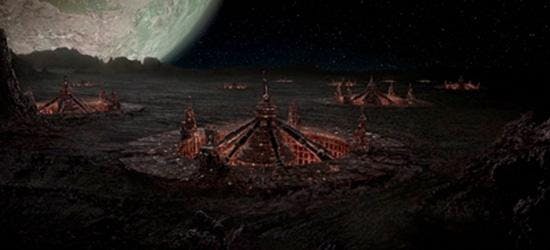
Figure 2: Looking at Romulus from the surface of Remus. Judging from the appearance of Romulus, the two orbits must be very close. Credit: Memory Alpha.Another example from Star Trek is the Delos System. The Enterprise D went there in The Next Generation episode “Symbiosis” to chart solar activity of the primary star. The two inhabited planets are Ornara and Brekka.
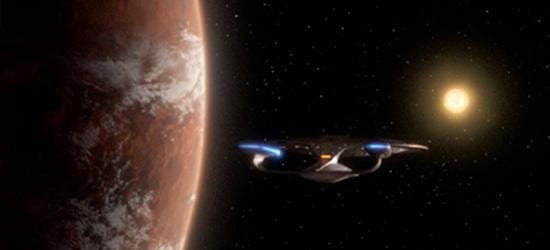
Figure 3: Brekka in the Delos System (TNG “Symbiosis”). Credit: Memory Alpha.The Chin’toka System in Cardassian space near the Federation border is another example with two inhabited planets, as is the Beta Renner System near both Federation and Ferengi space. Their two inhabited planets, Antica and Selay, were seeking membership to the Federation in TNG’s "Lonely Among Us.”
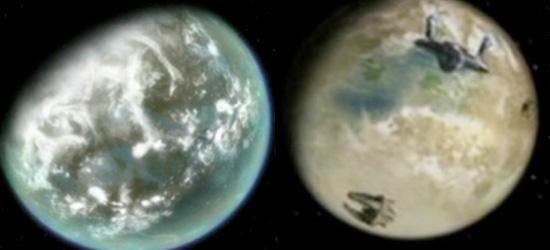
Figure 4: The two inhabited planets in the Chin’toka System (Dominion War in Deep Space Nine). Credit: Memory Alpha.And in The Original Series we encountered the Tellun System near the Federation and Klingon border, with the two inhabited planets Elas and Troyius. These two neighboring worlds ended up in conflict with each other. A diplomatic mission of the Enterprise was able to prevent an escalation and settled the issue peacefully (TOS: "Elaan of Troyius").
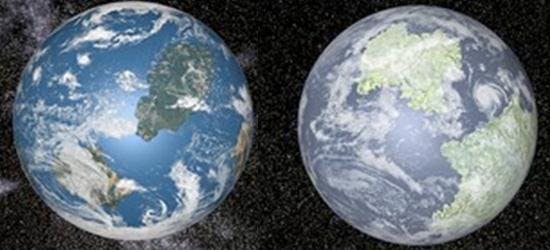
We see that yet another solar system configuration shown in Star Trek—that of two inhabited worlds in one solar system—has the possibility of being very real. Our astronomical research continues to see what other new and interesting worlds we will discover.Here are a few links for you if you’d like to know more about this topic.Coupling Up May Make Life Possible on Other Planets:https://www.unlv.edu/news/article/coupling-may-make-life-possible-other-planetsThe Kepler-62 System:https://www.nasa.gov/content/kepler-62-and-the-solar-systemMemory Alpha:http://en.memory-alpha.orgIf you are interested in hearing more about the latest discoveries in the physical sciences and technology in a fannish setting, come visit us at Shore Leave next July. This fan-run convention features over 12 hours of science programming, in addition of course to all the usual con activities. For more information please visit http://www.shore-leave.com.Inge Heyerwww.ingeheyer.com
